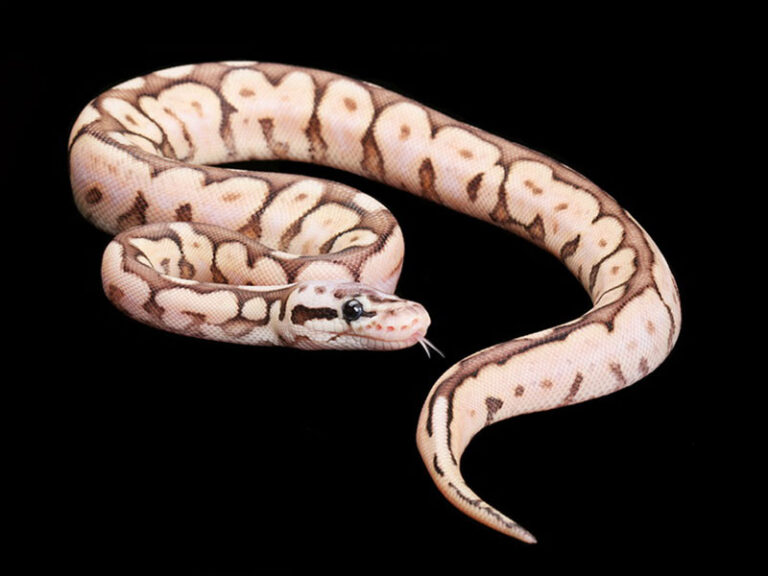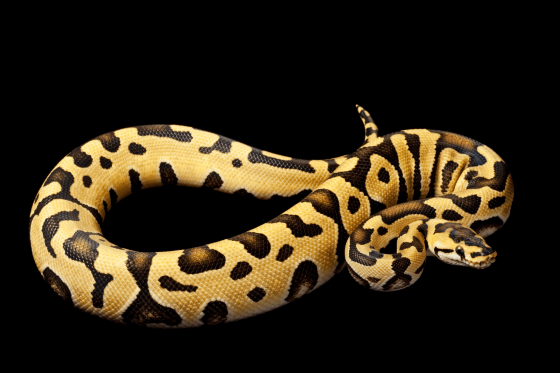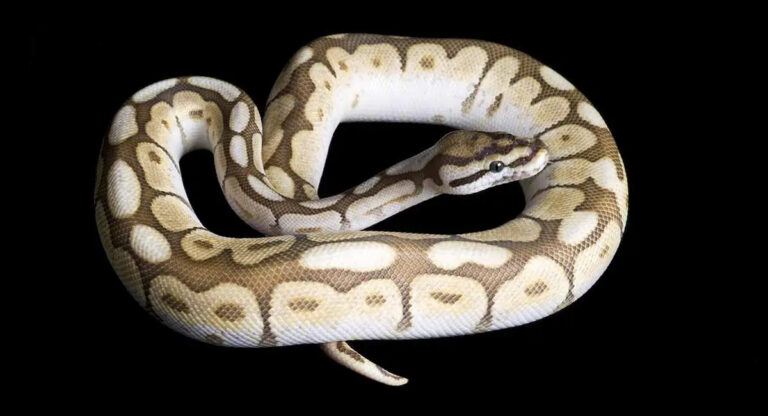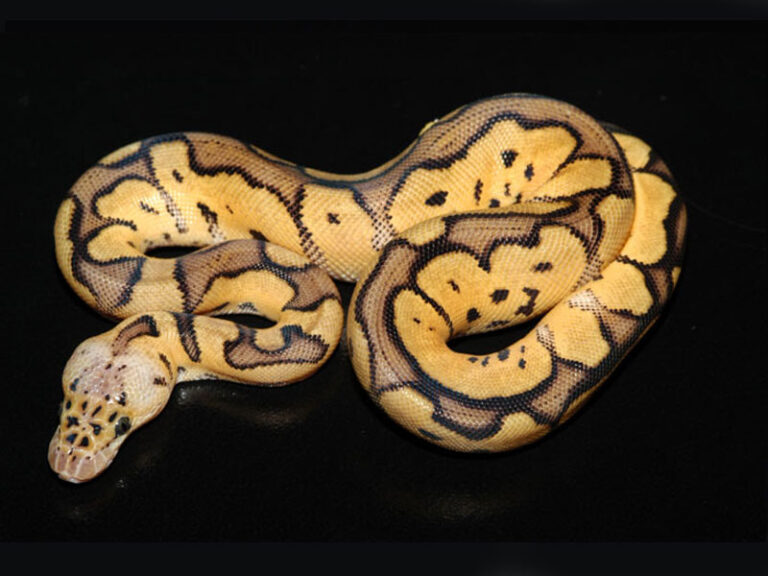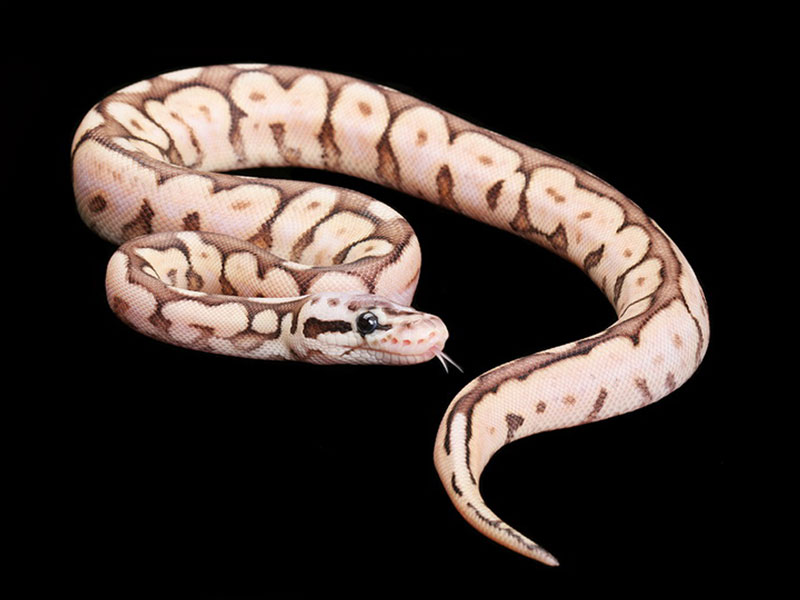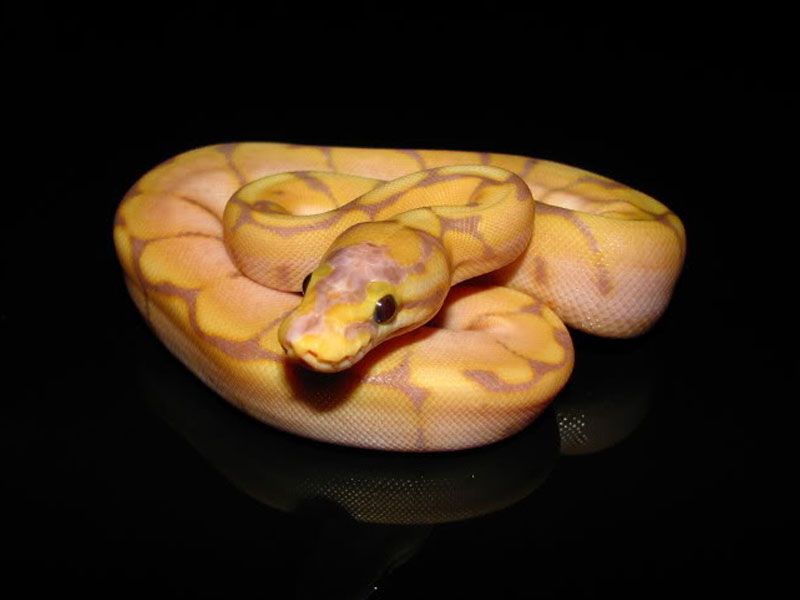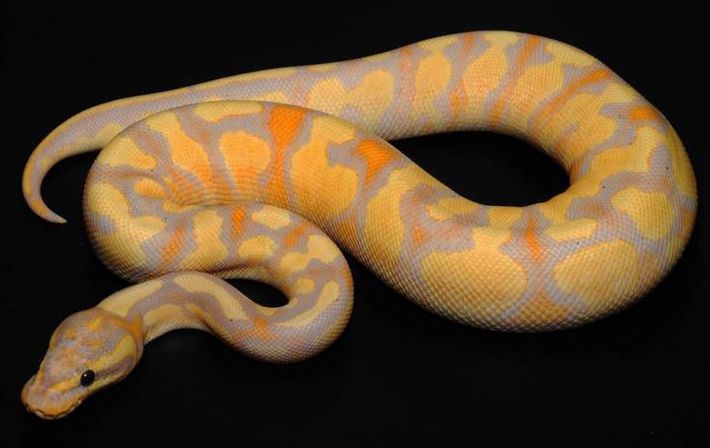The first time I brought a banana ball python home, I had no idea what I was getting myself into. Sure, I’d done my homework—read forums, done YouTube research, and even talked to a couple of breeders. But nothing really prepared me for the ground-level experience of having this gorgeous reptile in my care. Perhaps the most fascinating aspect of my journey has been learning about banana ball python size and how it grows over the years. From their adorable hatchling stage to their enormous adult size, these snakes are truly nature’s miracles. So grab a cup of coffee, sit back, and let me take you through all I’ve learned about banana python size, growth patterns, and just having one of these sweetcakes.
The Enchantment of the Banana Ball Python
Before we dive deep into banana ball python size, let’s talk about why these snakes are so gosh darn popular in the first place. With their yellow and orange spots, banana ball pythons are effectively living artwork. They’re a mutation of the normal ball python, bred purely for their looks. But other than how they look, they’re also popular due to their temperament, which is a big reason why they’re a favorite among beginners and advanced snake owners alike. If you’re curious about what makes them such a great choice, Why the Banana Ball Python is the Perfect Pet for Beginners covers everything you need to know.
When I first saw my banana ball python, I was hooked. But as any good pet owner will tell you, appearance isn’t everything. Knowing their growth and size is important for proper care.
Hatchling Stage: Little but Mighty
When I brought my banana ball python home, it was a small little hatchling—only 10 inches long and pencil-thick. At this stage, their length is kind of ridiculously small given what they will become. Don’t be fooled by the teeny-tiny size, though; these little ones have a lot of personality.
Hatchling Size Facts
- Length: 10–15 inches
- Weight: 50–100 grams
- Diet: Pinky mice 5–7 times a week
At this point, closely monitor their growth. A healthy hatchling will shed every few weeks and continue to gain weight gradually. If you wish to know how large your banana ball python will be, the hatchling stage is merely the starting point.
Teenage Period: Growth Surge to Arrive
As my snake hit the 6-month mark, I noticed a huge growth. This is the juvenile stage, when banana ball pythons experience their first major growth spurt. My snake doubled in length and was starting to plump up at this point.
What to Watch For in the Juvenile Stage:
- Length: 20–30 inches
- Weight: 200–500 grams
- Feeding: Fuzzy or small adult mice every 7–10 days
This is also when their dramatic coloration is more pronounced. The yellow and orange spots that define banana ball pythons begin to form, and their coloration becomes more dramatic.
Sub-Adult Stage: The Calm Before the Storm
At the 1.5 to 2-year point, my banana ball python had reached the sub-adult phase. Growth had slowed slightly at this time, but it was still growing larger on a regular basis. This is where I truly started paying attention to the banana ball python size and how it compares to other ball python morphs.
Sub-Adult Size Composition:
- Length: 30–40 inches
- Weight: 700–1200 grams
- Feeding: Medium rats 10–14 days
Something that did surprise me about this stage is how much their feeding schedule was impacting their development. They can get obese if overfed and stunted in their growth if underfed. Balance is what will lead your snake to its potential.
Adult Stage: The Final Form
By the time I was 3 years old, my banana ball python had grown almost to full size. Banana ball pythons average 3 to 5 feet in length, and the females were a bit larger than the males. My snake was a bit smaller than average, measuring around 3.5 feet in length—a size that was easy to handle and place in a cage.
Adult Banana Ball Python Size:
- Size: 3–5 feet
- Weight: 1200–2000 grams
Food: Big rats every 2–3 weeks
At this stage, their development is slower, and healthy weight maintenance is the primary issue. Regular check-ups at the vet and balanced diets are all important to ensure your snake remains in its healthiest state.
Influencing Factors on Banana Ball Python Size
While genetics dominate the determination of banana ball pythons’ size, there are a number of other factors that affect their growth:
- Diet: Feeding every day with suitable sized prey.
- Enclosure size: Growth is stunted by a limited enclosure, while a large enclosure offers room enough for growth and movement.
- Temperature and Humidity: Ball pythons are adapted to certain environmental parameters, and variation can influence growth and health.
- Health Problems: Disease or parasite can halt the growth, hence regular check-ups by the veterinarian are necessary.
General Misconceptions Regarding Banana Python Size
During my research, I came across some general myths about banana python size that I would like to clear up:
Myth 1: Banana ball pythons are larger than other morphs.
Fact: They are roughly the same size as other ball python morphs, typically 3 to 5 feet.
Myth 2: Feeding them more will make them bigger quicker.
Reality: You will only be able to make them obese and sick, not grow them.
Myth 3: Men and women develop at a similar pace.
Fact: Women are generally larger and heavier than men.
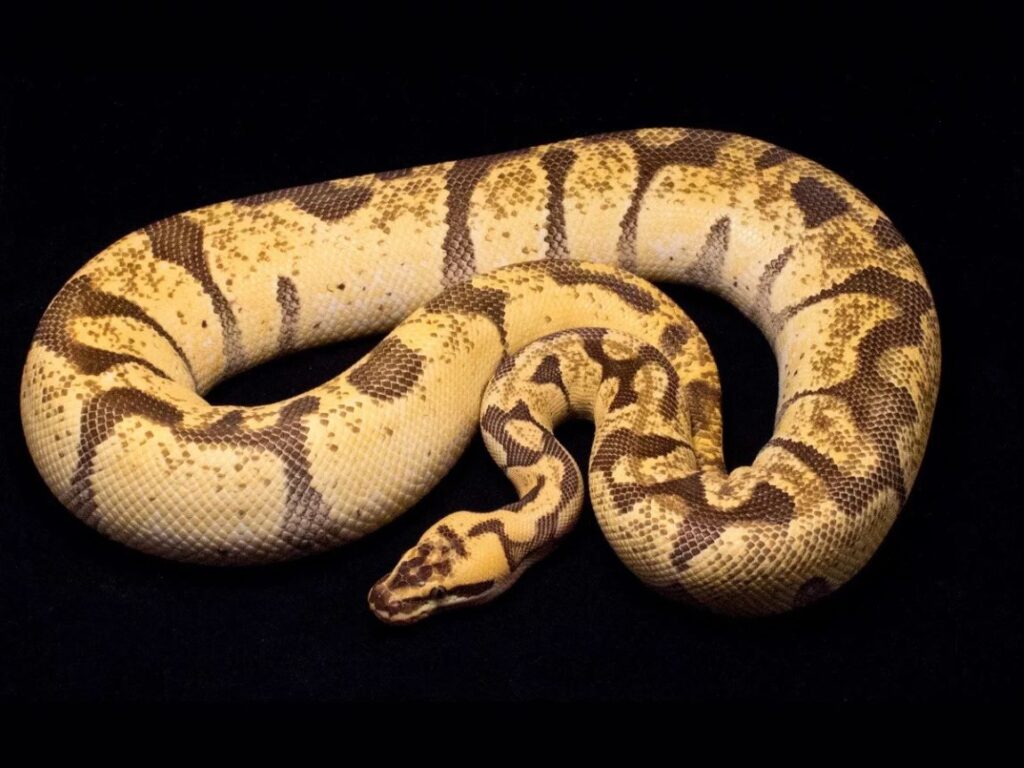
My Personal Recommendations for Tracking Development
If you are new to owning a banana ball python, some words of wisdom that I have found along the journey are:
- Keep a Growth Chart: Take note of your snake’s length and weight every month to ensure that they are growing well.
- Beware of Shedding: Shedding is a natural indication of healthy growth.
- Consult a Vet: If ever you have any doubt about your snake’s size or growth, do not hesitate to consult a professional.
Setting Up the Perfect Enclosure
One of the most critical aspects of assisting your banana ball python reach its full size potential is giving it the proper environment. A properly designed enclosure not only assists your snake in growing healthy but also keeps your snake stress-free and content.
Chief Components of a Banana Ball Python Terrarium:
- Size: The adults need a 40-gallon tank. Hatchlings and juveniles can start out in smaller tanks but will need to be upgraded as they grow.
- Substrate: Aspen shavings, coconut fiber, or cypress mulch are appropriate. Cedar and pine are poisonous and must be avoided.
- Temperature Gradient: Create a warm side (88–92°F) and cool side (78–80°F) in order to facilitate thermoregulation.
- Humidity: Maintain at 50–60% humidity, with occasional increases to 70% during shedding.
- Hiding Places: Provide at least two hides, one on either side, so that your snake can feel secure.
- Climbing Opportunities: Even though ball pythons don’t like climbing, adding branches or decorations can add to their environment.
When I originally constructed my banana ball python’s home, I goofed by putting it in a tank that was too big for its hatchling size. That left my snake in a week, a stressed-out condition that put it off feeding. Lesson learned: begin small and expand outward as they do!
Feeding for Maximum Growth
Feeding is where most new snake owners, including myself, have a learning curve. Prey size and frequency of feeding are what will ensure you have a healthy banana ball pythonsize. If you want tips check out these tips on choosing a healthy Banana Pied Ball Python!
Feeding Guidelines by Age:
- Hatchlings: Pinky mice every 5–7 days.
- Juveniles: Fuzzy or small adult mice every 7–10 days.
- Sub-Adults: 10–14 day medium-sized rats.
Adults: Big rats every 2–3 weeks.
One thing that I learned the hard way is that overfeeding is just as bad as underfeeding. My snake didn’t eat for weeks, and I panicked and overfed. Ball pythons fast at some times, especially in the winter months. Be patient!
Caring for Your Banana Ball Python
Handling is one of the joys of owning a banana ball python. They are friendly animals and wonderful pets, but handling them carefully is necessary to avoid stressing or injuring them.
Safe Handling Tips:
- Start Slow: Allow your snake to acclimate to its new environment before handling.
- Be Gentle: Hold their entire body and don’t pull them.
- Give it some space: If your snake curls up, hisses, or tries to retreat, give it some space.
- Limit Handling Time: 10-15 minutes two or three times a week is sufficient for most snakes.
I shall never forget when my banana ball python wrapped around my wrist for the first time. It was a moment of complete bonding, and it made all the work and research so worthwhile.
Shedding and Health Monitoring
Shedding is a normal, healthy process. Partial sheds may be an indication of issues like low humidity or illness, though.
Indications of a Healthy Shed:
Full-body shed in one piece and clear.
Rich, luxuriant color following molting.
No skin patches or eye caps remained.
If your snake is struggling to shed, you can attempt to increase the humidity or offer a humid hide. Preventative care check-ups with a reptile vet are also beneficial to identify issues early.
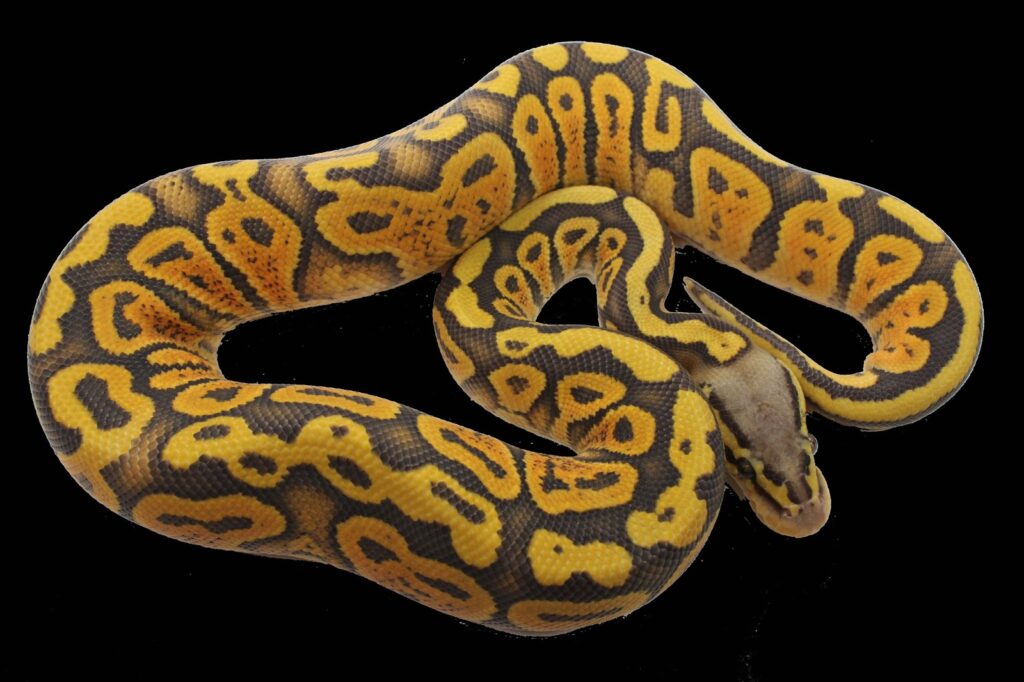
Wrapping Up
Owning a banana ball python is a journey full of surprises, learning curves, and rewarding moments. From their tiny hatchling stage to their impressive adult size, these snakes continue to captivate and educate their owners. The key takeaways? Track their growth, provide a balanced diet, maintain an optimal enclosure, and always be patient with their natural behaviors.
If you’re looking for a reliable source of reptile care products, enclosures, or expert advice, Universe Reptiles is worth checking out. They offer a great selection of supplies tailored to reptile owners, including high-quality tanks, heating solutions, and feeders—everything you need to create the perfect environment for your scaly companion.
frequently asked questions
Q1. How large are banana ball pythons?
A: Adult banana ball pythons will usually measure 3–5 feet long, and the females will be larger than the males.
Q2. Are banana ball pythons faster growing than other morphs?
A: No, development is about the same as in other ball python mutations. Size depends more on genes and husbandry.
Q3. Can I stunt the growth of my snake by not feeding it enough?
A: Yes, starving your snake will stunt its growth and make it ill. Be consistent with a regular feeding schedule.
Q4. How often should I weigh my snake?
A: Scale your snake monthly to monitor its growth and put it in an optimal weight range.


